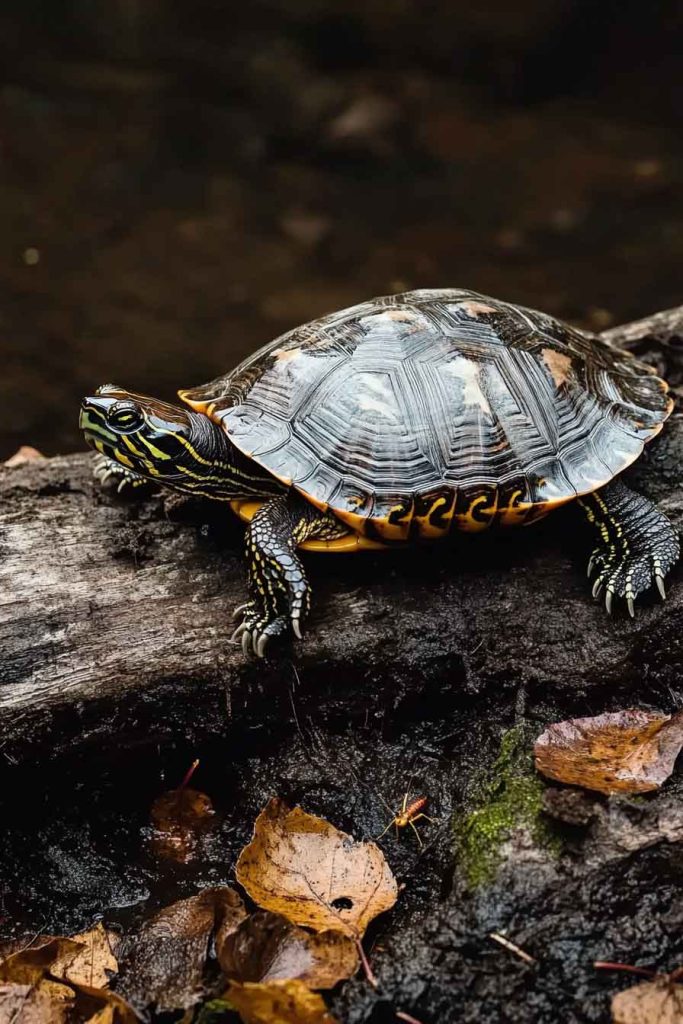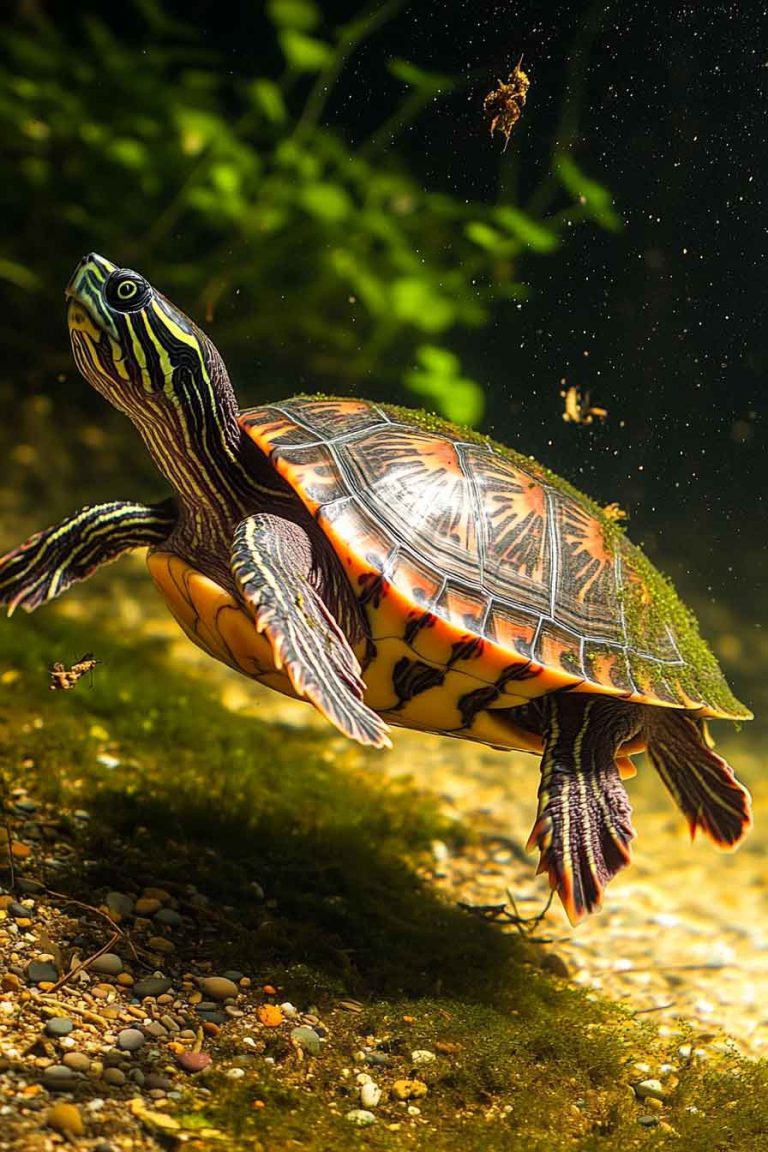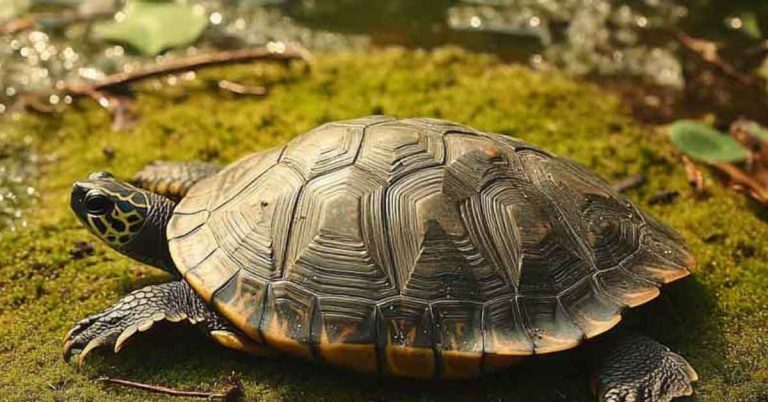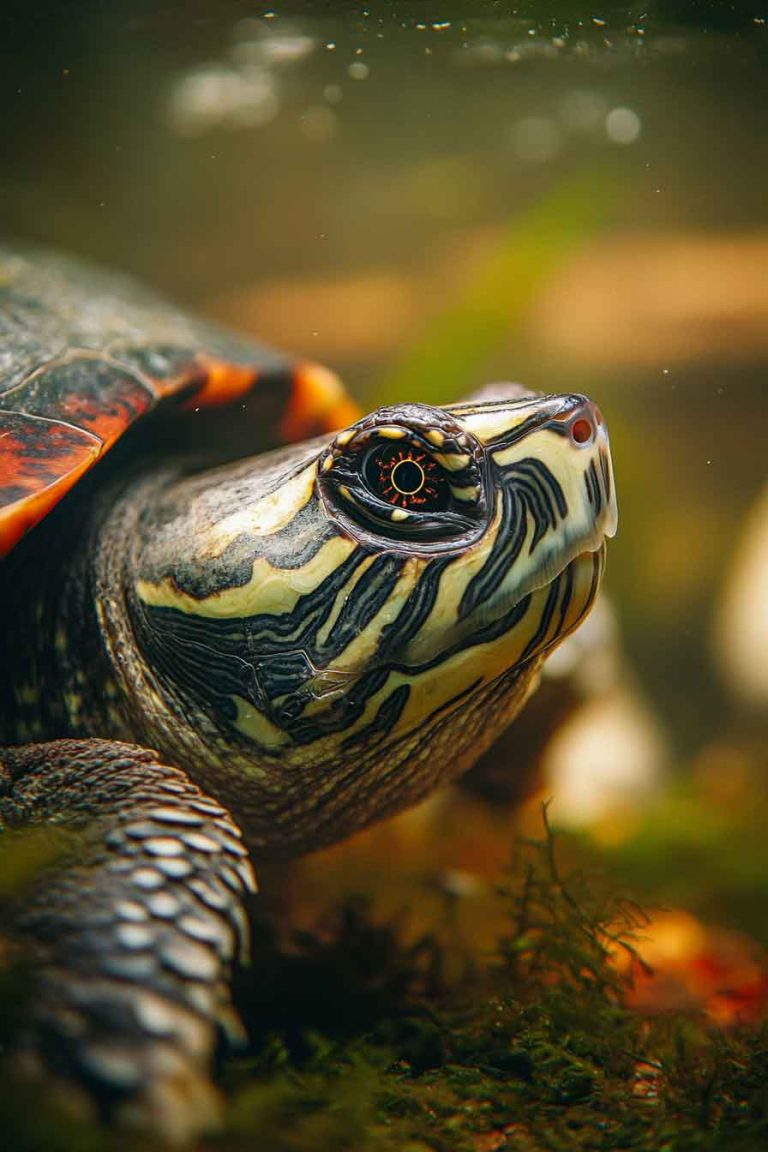Why Is My Turtle’s Shell Soft? Causes, Dangers & How to Fix It
If you’re anything like me when I first noticed it, you’re probably staring at your turtle and thinking, “Wait… is their shell supposed to feel like that?” Trust me — I’ve been there. When I first discovered my turtle’s shell felt softer than usual, I freaked out a little. It turns out, a soft shell…
If you’re anything like me when I first noticed it, you’re probably staring at your turtle and thinking, “Wait… is their shell supposed to feel like that?” Trust me — I’ve been there. When I first discovered my turtle’s shell felt softer than usual, I freaked out a little. It turns out, a soft shell isn’t something to ignore.
So, why is your turtle’s shell soft? In most cases, it’s a sign of a health issue like metabolic bone disease (MBD), poor diet, or inadequate lighting. And while some shell softness is normal in baby turtles, a consistently squishy or spongey shell in any turtle — especially an adult — usually means there’s a problem. Let’s break it all down.
Is a Soft Shell Normal for Turtles?
Sometimes, yes — but not always. When I was new to turtle care, I learned that baby turtles often have slightly soft shells. It’s part of the natural growth process as their bodies develop and harden over time. That said, even hatchlings should gradually firm up with proper care.
But if your turtle is older — or if the shell seems too soft or shows other signs of trouble like discoloration, flaking, or indentations — that’s a red flag. In my case, my turtle’s shell was bending slightly under gentle pressure. That’s when I knew something wasn’t right.
So here’s what I found out — a turtle’s shell can soften due to a few key issues, and they’re all fixable if caught early.

Common Reasons Why a Turtle Shell Becomes Soft
If your turtle’s shell is soft, there are a few likely causes. These are the ones I’ve experienced myself or learned about from vets and other turtle owners:
1. Lack of UVB Lighting
This is one of the most common reasons. Without proper UVB exposure, turtles can’t synthesize vitamin D3, which they need to absorb calcium. And no calcium means soft bones — and yes, the shell counts as bone.
I had a cheap light setup when I started out, not realizing that regular heat lamps don’t provide UVB. Once I got the right UVB bulb and made sure it was within the right distance, I saw slow but steady improvement in my turtle’s shell.
2. Calcium Deficiency (Poor Diet)
Turtles need a calcium-rich diet to keep their shells and bones strong. If your turtle’s food doesn’t contain enough calcium, or if it’s not properly balanced with phosphorus, shell softening is inevitable.
I had to learn to avoid cheap pellet food and started offering calcium blocks, leafy greens like kale, and even occasional cuttlebone. It wasn’t an overnight fix, but it made a noticeable difference.
3. Metabolic Bone Disease (MBD)
This is a serious condition that develops when your turtle has long-term deficiencies in calcium or UVB exposure. MBD causes soft shells, swollen limbs, deformities, and in severe cases, death.
If your turtle’s shell feels rubbery and the turtle seems weak, wobbly, or unable to fully lift itself, get to a vet — fast. Mine never reached this stage, but I’ve spoken to others who needed urgent vet care to reverse the damage.

Other Signs That Something’s Wrong With Your Turtle’s Shell
When I noticed the softness, I didn’t just rely on feel — I started observing other clues. A soft shell often comes with other symptoms, and it’s important to look out for these so you can act early.
1. Shell Discoloration
A healthy turtle shell should have a consistent color — maybe some natural patterns, but nothing dramatic. If your turtle’s shell is turning pale, white, yellowish, or even pinkish, especially in soft areas, that could be a sign of calcium loss, infection, or even fungal issues.
2. Lethargy or Weakness
When my turtle had a soft shell issue, I noticed he wasn’t as active. He’d float more than usual, bask less, and even skip meals. Turns out, soft shells often come with weak muscles and general fatigue — another reason to take it seriously.
3. Deformed or Misshapen Shell Growth
In more advanced cases, a soft shell can lead to pyramiding (bumpy shell growth) or warped shapes. This usually means the condition has been going on for a while. It’s not always reversible, but you can prevent it from getting worse with proper care.
4. Visible Sores, Foul Smell, or Shell Rot
If the soft areas are also wet, smelly, or oozing, that could be shell rot — which is a serious bacterial or fungal infection. I once rescued a turtle from a bad enclosure and had to treat shell rot with daily cleaning and antiseptic ointment. A vet may prescribe antibiotics in extreme cases.

What To Do if Your Turtle’s Shell Feels Soft
Let me walk you through the exact steps I took — and what I wish I had done sooner. These are the basics that worked for me and other owners dealing with this issue.
Step 1: Check Your Lighting Setup
- Make sure your turtle is getting 10–12 hours of UVB light per day.
- Use a dedicated UVB bulb (like 5.0 or 10.0 strength, depending on species).
- Replace the bulb every 6 months, even if it still lights up — UVB output fades over time.
- Position the lamp about 10–12 inches above the basking spot with no plastic or glass between it and the turtle.
I use a combo fixture — one side for heat, the other for UVB — and it’s made a big difference.
Step 2: Boost Their Diet With Calcium
- Switch to a high-quality turtle pellet with a balanced calcium-to-phosphorus ratio.
- Add dark leafy greens like collard greens, kale, or dandelion leaves if they’re an omnivorous species.
- Offer cuttlebone or a calcium block in the tank — I leave it in the water all the time.
For picky eaters, I even dust their food with a calcium + D3 powder once or twice a week.
Step 3: Improve Tank Conditions
- Keep the basking area dry and warm (around 88–92°F).
- Maintain water temperature between 75–80°F, depending on the species.
- Clean the tank regularly to prevent bacterial buildup.
Stress, bad water, or cold conditions can all slow down recovery — so getting your setup right is crucial.
How Long Does It Take for a Turtle’s Shell to Harden?
This was one of my biggest questions when I started fixing the issue: “How long until my turtle’s shell gets back to normal?”
Honestly, it depends on how bad things were to begin with. In my case, with proper lighting and diet changes, I started seeing improvement in about 3–4 weeks. The shell gradually felt firmer, and the turtle became more active again. Full recovery, though, might take a few months — especially if the softness is due to something serious like metabolic bone disease (MBD).
The key is to stay consistent. Don’t skip UVB time. Don’t cut corners on food. Recovery takes patience, but you’ll get there.
When Should You See a Vet?
Look, I’m all for DIY turtle care — but there are times when you really do need a reptile vet. Here’s when I wouldn’t wait:
- The shell feels very soft or spongey
- There’s bleeding, cracking, or open wounds
- You notice a bad smell, discharge, or shell rot
- Your turtle is too weak to eat or swim properly
- It’s a baby turtle with worsening symptoms despite good care
Vets can check for infections, prescribe calcium supplements, and run bloodwork if needed. It might cost a bit, but it could save your turtle’s life.
FAQs
1. Is it normal for baby turtles to have soft shells?
Yes, a little bit of softness is okay in hatchlings. But by the time they’re a few months old, their shells should be noticeably firmer — especially with proper lighting and diet.
2. Can a turtle recover from a soft shell?
Absolutely — if caught early and treated properly. My turtle did! Just make sure you address UVB, diet, and tank setup consistently.
3. Can I give my turtle calcium pills?
It’s better to use calcium-rich foods, cuttlebone, or calcium powder. Only use pills or liquid supplements under a vet’s direction — too much calcium can cause other problems.
4. How can I tell if it’s shell rot or just soft shell?
Shell rot usually comes with wet spots, foul odor, and visible damage like holes or peeling. Soft shell from calcium deficiency feels spongey or bendable, but doesn’t usually smell or leak.
Final Words
If your turtle’s shell feels soft, don’t panic — but don’t ignore it either. I’ve dealt with this firsthand, and I know how scary it can feel at first. But with the right lighting, diet, and a little bit of patience, your turtle can bounce back.
The most important thing is to act early. Whether it’s switching up your setup, adjusting the food, or calling a vet, the sooner you move, the better the outcome.
And hey — if you’ve gone through this too or have any questions, drop a comment. I’d love to hear your experience and help however I can.







